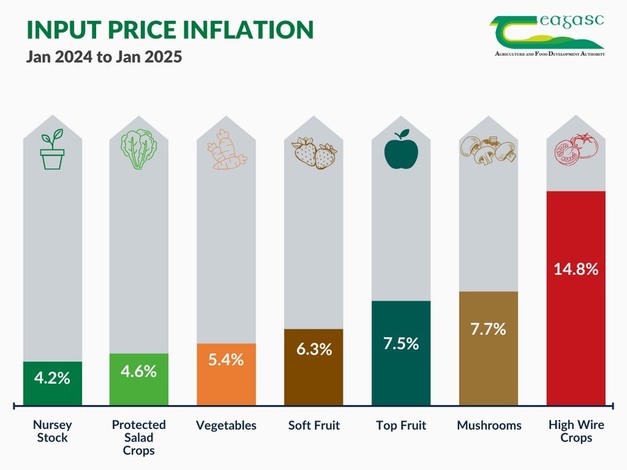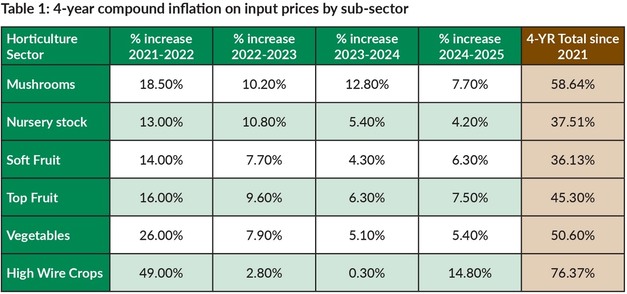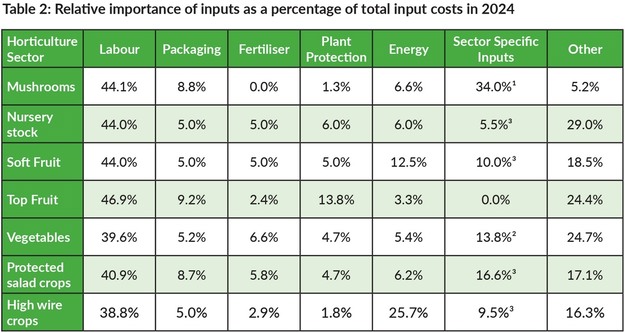The Teagasc Horticulture Development Department has published the 2025 edition of its Horticulture Crop Input Prices report, revealing continued input cost inflation across all sub-sectors of the Irish horticulture industry. This fifth annual report provides a year-on-year comparison of input prices, focusing on January 2025 relative to January 2024, and highlights the economic pressures facing primary producers as they negotiate prices for produce in the year ahead.
According to the report, the average cost of horticultural inputs has risen by 51% since the first edition in 2021. The data shows increases across all major sub-sectors, with inflation ranging from 36% to 76%. Labour remains the most significant cost driver, now accounting for 42.6% of horticultural input costs. In 2025, labor costs have continued to climb, maintaining their position as a central contributor to overall input inflation.
The sector has also been significantly affected by adverse weather events. Persistent rainfall in 2024 led to the loss of early plantings, and further storm damage in January 2025 added to the challenges. These conditions have intensified the pressure on growers to generate margins that cover costs and support reinvestment.
Michael Gaffney, acting Head of the Teagasc Horticulture Development Department, stressed the urgency of these issues. He noted that primary producers are facing multiple compounding challenges, including climate events and input cost inflation, and that a viable margin over production costs is essential to ensure future investment and generational renewal in the sector.
Beyond labor, input categories such as energy and fertilizer, which remained relatively stable in 2024, are now also contributing to higher overall costs. In response, the report calls for a market-based solution that enables growers to invest in technology and infrastructure to adapt to both economic and environmental challenges.
Efforts are underway within the sector to reduce reliance on manual labour, including trials of labour-saving technologies in several key sub-sectors. However, the report notes that these innovations are costly and not yet widely available, creating a risk of a gap between technology readiness and the declining availability of labour.
The report also points to opportunities for extending growing seasons and diversifying crop production, which could help reduce food waste, packaging, and the environmental impact of long supply chains. Irish horticultural produce, which has a comparatively low environmental footprint and notable health benefits, is increasingly seen as a critical part of a sustainable food system.
Valued at €521 million in farm gate output, horticulture remains Ireland's fourth-largest agricultural sector. As producers navigate shifting climatic conditions, rising input costs, and evolving market demands, the report underscores the need for policy and commercial support to maintain a resilient and sustainable horticultural industry.
To view the full report, click here.
For more information:
Eric Donald
Teagasc Horticulture Development Department
Tel: +353 59 9183408
Email: eric.donald@teagasc.ie
www.teagasc.ie



